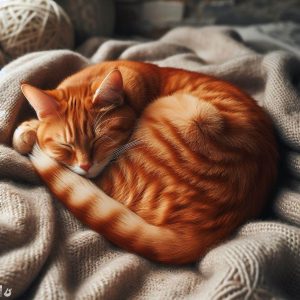Has your cat ever given you a sandpapery lick on the hand or face? You’re not alone. Cat licking is a common—and often perplexing—feline behavior.
As you’re sitting down to binge your favorite show, your cat hops onto your lap and starts licking your arm. At first it tickles, but then it starts to chafe. You gently push Kitty off, but she jumps right back to lick you again!
We’ve all been there. Cat licking can seem weird and annoying. But it’s important to understand the reasoning behind this quirky cat conduct. When you know why cats lick and how to respond, you can actually enjoy the bonding time and cat kisses!
In this article, we’ll dig into the fascinating feline science behind cat licks. You’ll learn:
- Why cats lick people in the first place
- How to tell if licking is normal or excessive
- Risks to know about cat licking
- Tips to curb over-licking
- How to embrace cat licks from your affectionate kitty
Let’s start unraveling the mysteries of this common cat move.
Why Do Cats Lick Their Humans?
Cats lick their human friends for a few primary reasons. Understanding the motivation behind the licks can help you respond appropriately when a tongue bath begins.
Grooming
Grooming is a top reason your cat licks you. Cats are fastidious groomers, spending up to 50% of their waking hours licking their own fur and their feline friends’ coats. They also politely groom human family members.
To your cat, licking is a practical way to clean and take care of a loved one. She sees you as part of her social group or “colony” and instinctively grooms you like she would another cat.
However, her rough tongue isn’t well-suited for delicate human skin. What feels helpful to your cat may feel scratchy to you!
Showing Affection
Another major reason for cat licking is to show affection. When your cat licks you, she’s communicating her fondness through feline kisses.
This loving licking behavior starts young, as mother cats lick newborn kittens to groom them while bonding. Cats continue using licks to show affection into adulthood with littermates, cat friends, and human companions.
Pro Tip: When your cat licks you, she’s not being gross or weird. She’s simply showing love through natural feline gestures!
Communication
For cats, licking also serves as an important communication tool. Cats use body language more than vocalizations to connect. Licking can mean different things, including:
- Happiness at seeing you (like a kitty kiss hello!)
- Requesting food or attention
- Soothing themselves for comfort
- Showing social dominance
- Indicating a medical issue
So pay attention to context clues to decipher what Kitty is saying with her licks!
Salty Taste
There’s also a scientific reason for cat licking. Cats can taste salt on human skin, and they love it! Their rough tongues are designed to scrape meat and lap up tasty juices. These tiny barbs also detect salt.
When cats lick sweaty skin, they’re responding to the appealing salty flavor. That’s why your cat may go after your fingers after you’ve eaten chips or other salty snacks. Yum!
Why Does My Cat Bite Me After Licking?
You’re petting your purring cat, and she gives your hand a few licks—then chomps down with her teeth! Ouch. This abrupt move can definitely be puzzling (and painful).
When a lick leads to a bite, don’t take it personally. Here are some potential reasons for this behavior combo:
- Overstimulation: The petting and licking became overstimulating, so she instinctively nipped to get you to stop touching her.
- Mixed signals: She craved affection but then got over that, causing conflicting impulses that led to a bite.
- Love bites: Some cats communicate affection by gentle bites along with licks. But they misjudge and bite too hard.
- Medical issue: Dental problems, neurological issues, pain, or other health conditions could potentially cause bite reactions.
The bottom line? Biting after licking usually occurs when your cat has complex motivations and reactions she doesn’t know how to communicate clearly.
Pro Tip: When your cat licks then bites, say “ouch!”, stop petting, and walk away to teach her that this combo ends playtime.
Is Cat Licking Harmful? Risks to Know
Cat licking may seem kind of gross, but it’s typically harmless for healthy humans. However, some risks do exist:
Skin Irritation
Excessive licking with a scratchy cat tongue can cause skin redness, irritation, scratches, and even abrasions. The most irritation usually occurs in people with sensitive skin. Long-haired cats also tend to have rougher tongues from more debris getting caught in their coat.
To reduce skin irritation, trim your cat’s nails, use a smooth ceramic food bowl, and limit intense licking sessions. Apply a little hydrocortisone cream or aloe vera gel to soothe any areas. And see your doctor if irritation becomes severe or infected.
Infection
Though uncommon in healthy adults, cat bites that break the skin carry a slight infection risk from bacteria in cat saliva called Pasteurella. Licking alone cannot transmit infections.
Monitor any cat bites or scratches for redness, swelling, discharge, and other symptoms, and call your doctor to request antibiotic treatment if needed. Proper wound care greatly reduces any complications.
Parasites
It’s possible but unlikely for parasites like hookworms and tapeworms to spread by cat licks. Outdoor cats who eat rodents have the highest parasite loads. Good nutrition, indoor lifestyle, and deworming meds protect cats against most parasites.
Allergies
People with cat allergies may react to saliva spread onto skin by licking. However, they’re actually allergic to the cat dander (shed skin flakes) on fur. Licking just makes symptoms worse by spreading more allergens.
Allergy meds and limiting lick time helps control reactions. Overall, the allergy risk from a lick is very low.
Rabies
Extremely rare, but cats can theoretically transmit rabies through bites that break skin. Lick-only contact does not pose a rabies risk.
Indoor cats who stay up to date on rabies shots are very unlikely to contract or spread this serious but preventable viral disease. Talk to your vet right away if a potentially rabid cat bites and licks broken skin.
Pro Tip: Keep your cat’s rabies vax on schedule and avoid stray cats to prevent rabies transmission. Consider the rabies vaccine for yourself if you assist stray cats.
For most people, the risks from feline licking are minimal. But do monitor for any skin irritation or infections after prolonged kitty kisses, and follow up with your doctor if concerns arise.
Normal vs. Excessive Licking
Like people, every cat has unique habits when it comes to licking frequency. What’s “normal” licking for one cat may be excessive for another.
So how can you determine if your cat’s licking is within a normal range vs. obsessive? Here are some guidelines:
- Normal: Brief, infrequent licking sessions averaging a few minutes per day. Your cat stops when you redirect her. Minimal skin irritation.
- Excessive: Frequent, lengthy bouts of licking focused on one area like hands or feet. Persists despite redirection. Causes skin damage.
Excessive licking can signal underlying medical or behavioral issues requiring veterinary attention. Let’s look at some possible causes.
Medical Reasons
Many health problems can spark obsessive licking, including:
- Dental disease
- Skin allergies or rashes
- Pain
- Neurological disorders
- Nausea or digestive issues
Make a veterinary appointment to diagnose and treat any condition leading to nonstop licking. The compulsion should improve once the underlying problem is resolved.
Behavioral Causes
Sometimes excessive licking ties more to behavior than health. Potential factors include:
- Anxiety or stress
- Boredom and under-stimulation
- Early separation from mom and littermates
- Poor socialization
- Obsessive compulsive disorder
Work with both your vet and a cat behaviorist to pinpoint the cause of obsessive licking. Treatment might include anti-anxiety medication, cat enrichment tactics, and positive reinforcement training.
| Normal Licking | Excessive Licking |
|---|---|
| A few licks during petting | Constant licking that seems obsessive |
| Brief grooming licks | Frequent intense grooming episodes |
| Licking around the mouth at mealtime | Licking non-food areas excessively |
This table summarizes differences between normal and excessive licking to assist evaluation. Contact your vet if your cat’s licking patterns seem problematic.
How to Make Your Cat Stop Licking You
While healthy cat licking provides social benefits, excessive licking understandably becomes bothersome. Try these tactics to curb over-licking:
- Redirect to toys or treats to shift your cat’s focus
- Limit petting to avoid overstimulation
- Ignore excessive licking, then reward calmness with treats and praise
- Use bitter anti-lick sprays on off-limit areas
- Trim nails blunt to reduce scratching
- Lock your cat out of problem areas
- Try synthetic pheromone products to encourage relaxation
- Ask your vet about medication for anxiety or compulsion
With positive reinforcement training and patience, you can dial back problematic licking while maintaining normal social grooming. Consult both your vet and a cat behaviorist for extra help if needed.
The Takeaway: Enjoy Cat Licks in Moderation!
When your cat licks your face, arm, leg, or really any skin she can access, she’s not being a weirdo. She’s communicating affection in classic cat style!
But excessive licking does warrant evaluation and management. The ideal is to curb over-licking while still enjoying the social bonding of normal feline lick limits.
So next time your cat greets you with a lick or two, don’t recoil. Recognize those prickly kitty kisses for what they are—your furry friend saying “I love you!” in the comically quirky way cats show their devotion.
With the right perspective, you can grin and bear the sandpaper licks as an endearing sign of your special cross-species bond. Enjoy those tickly cat kisses as proof you have a loving feline family member!



